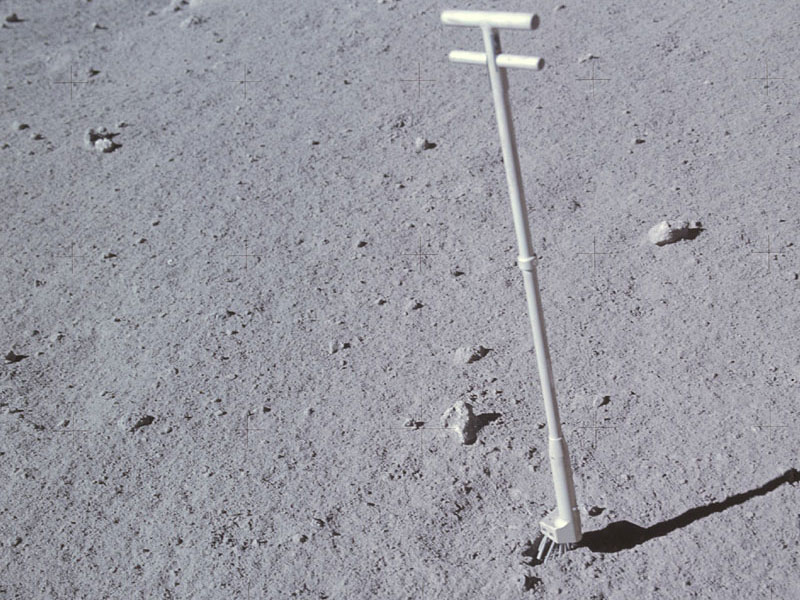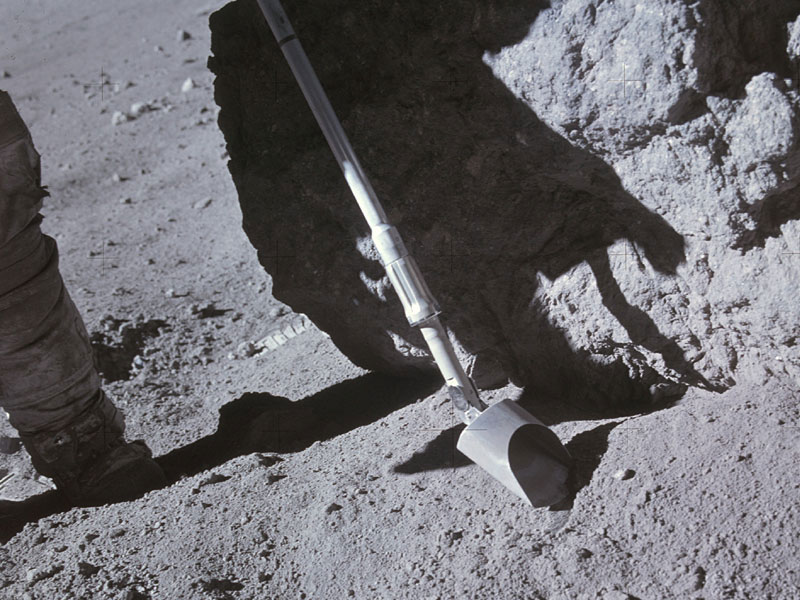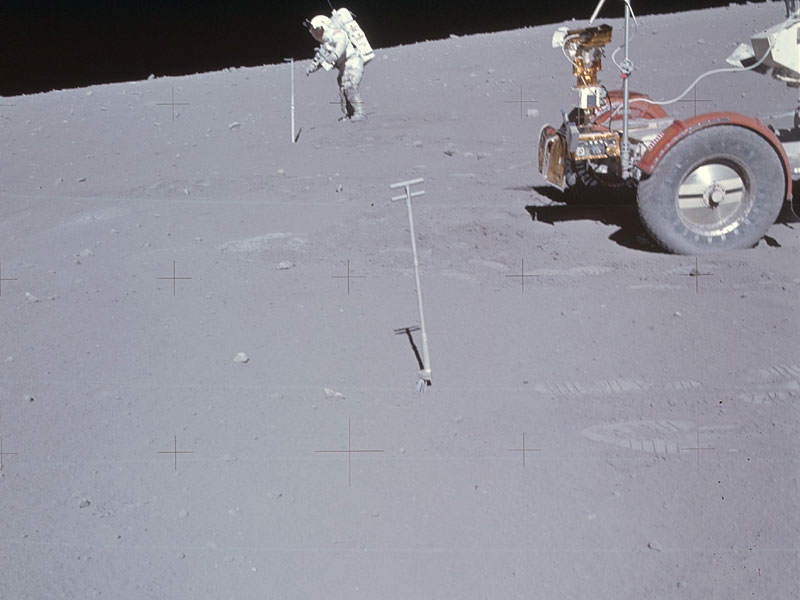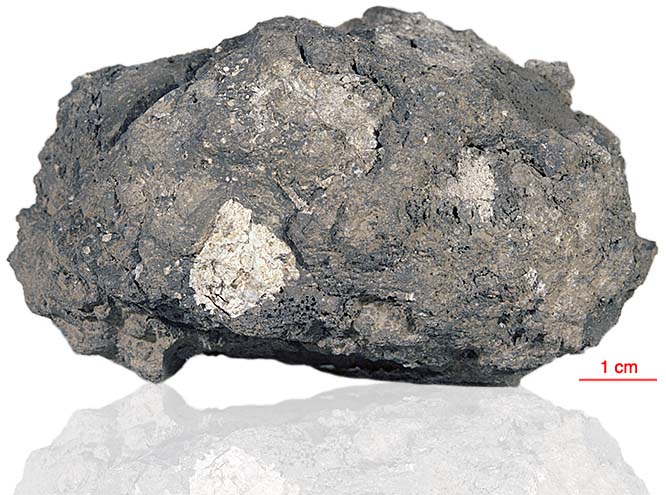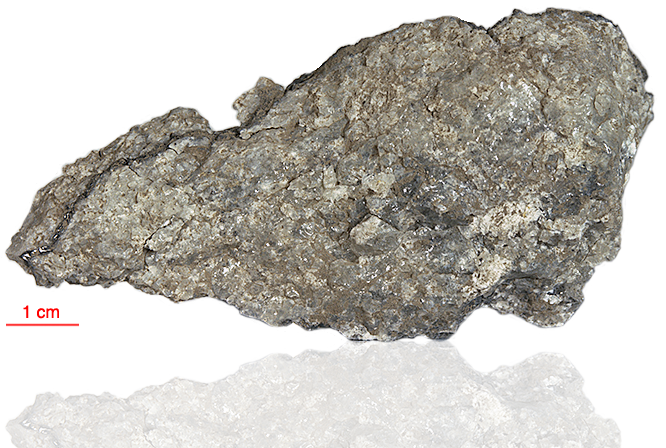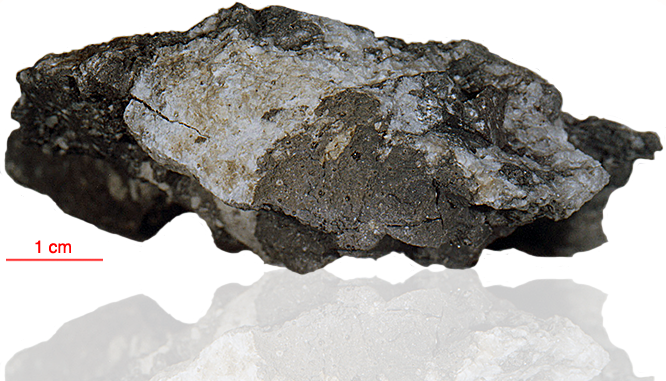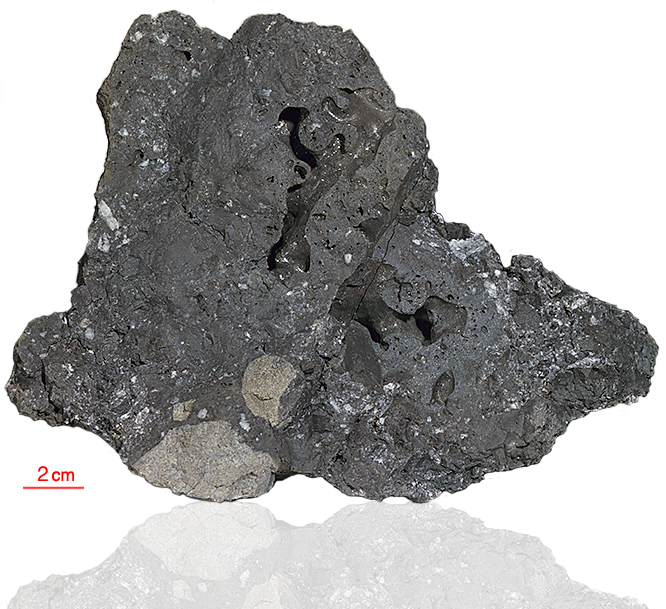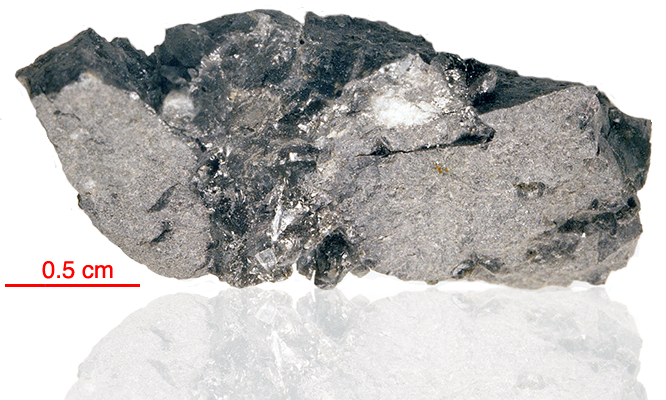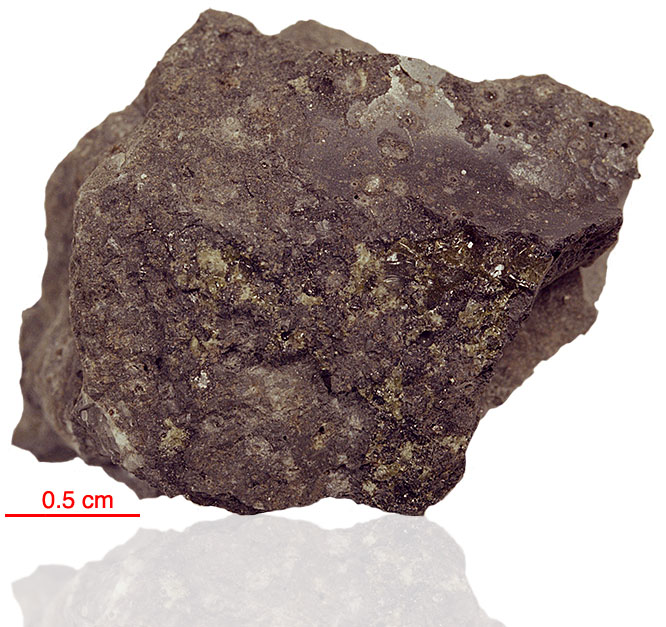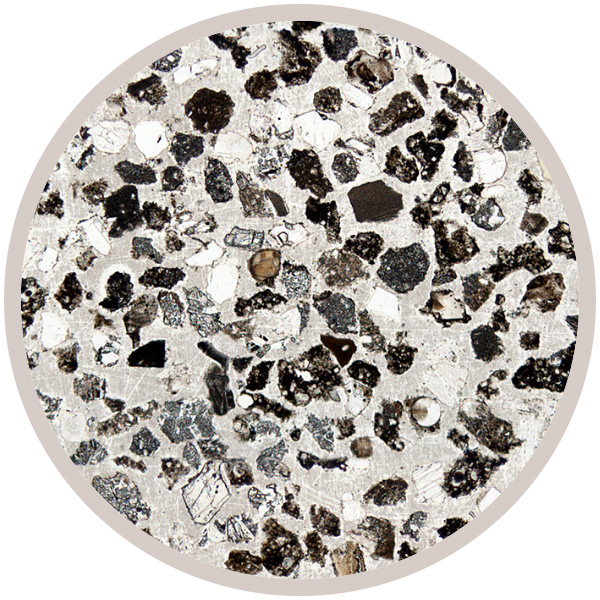
Fact sheet
Sample 68501 is mature lunar soil known as a regolith, which was collected at Station Eight during the Apollo 16 mission. Regolith is produced from the fine-grained debris formed in both large and small impacts. Agglutinates (clusters of dust welded together to form larger particles) in the soil form by melting due to continual bombardment of the Moon’s surface by micrometeoroids.
This sample was sieved to remove the very fine dust, allowing examination of the range of large fragments. It mainly consists of fragments of highlands rocks, anorthosite, norite and microbreccias, impact-produced glass and agglutinates. The soil shows that the Lunar Highlands are very rich in plagioclase feldspar but contains relatively few fragments of mare basalts.
Further details of this and other Apollo samples are here: http://curator.jsc.nasa.gov/lunar/
The Apollo 16 landing site was in the hilly region around Descartes crater in the lunar highlands. The landing spot was chosen to allow the astronauts to gather geologically older lunar material (Descartes Formation and the Cayley Formation) than the samples obtained in the first four landings, which were in or near lunar maria.
The mission lasted 11.1 days, with a stay on the lunar surface of 71 hours. The crew were on the lunar surface for 20.2 hours during which they traversed approximately 27 kilometers and collected approximately 96 kilograms of samples.
Apollo 16 was launched on 16 April 1972.
